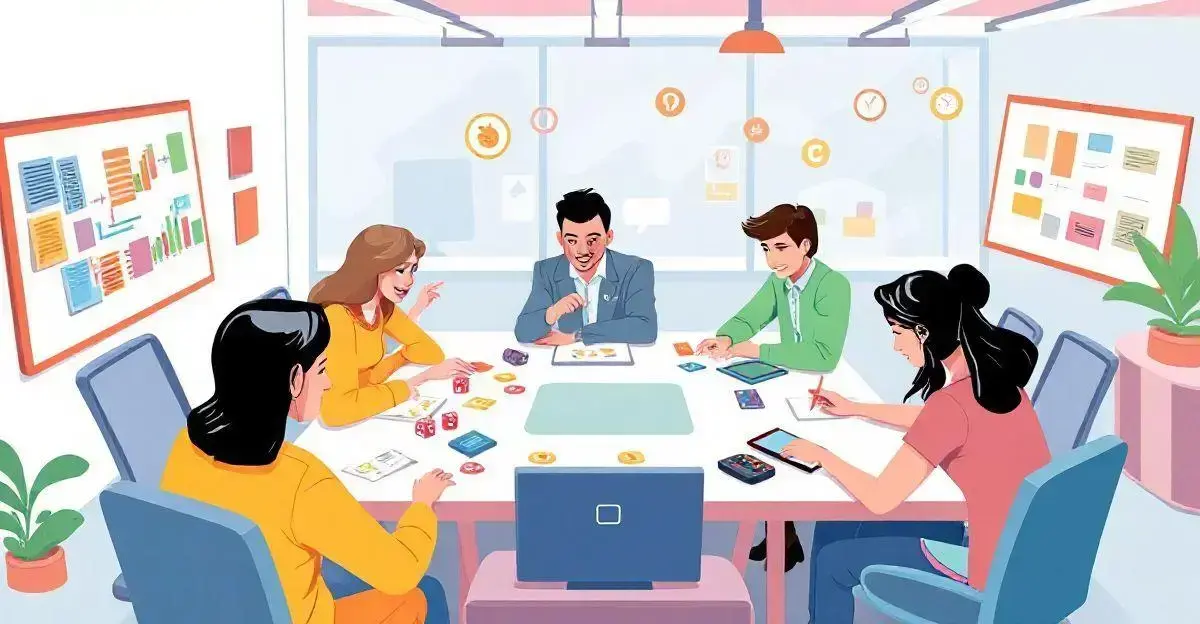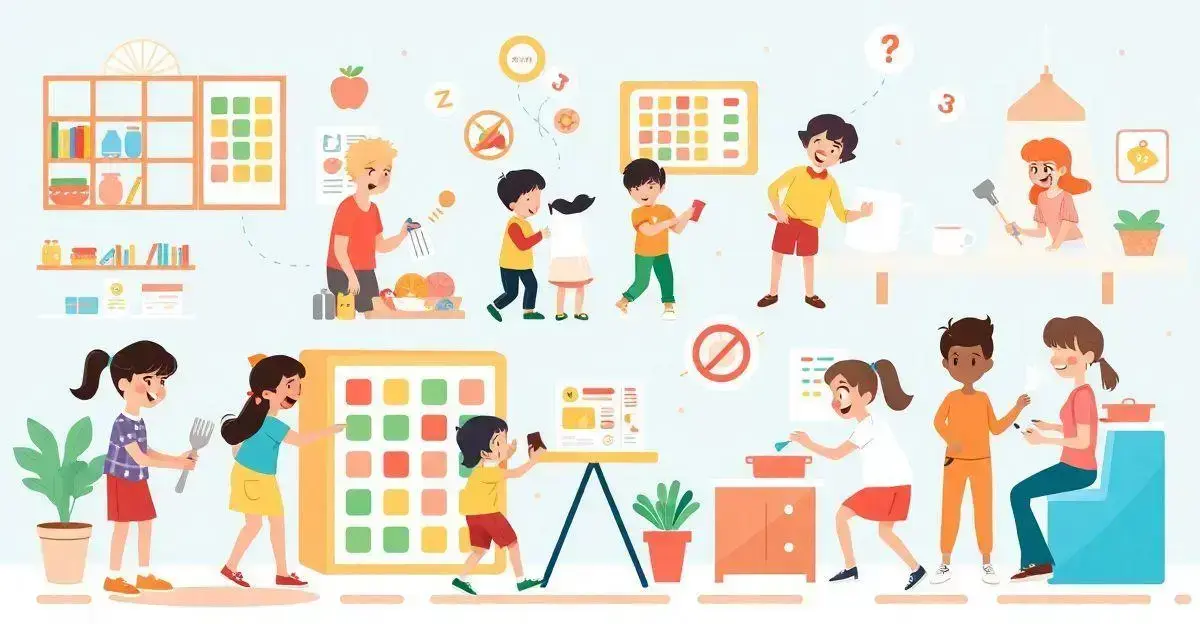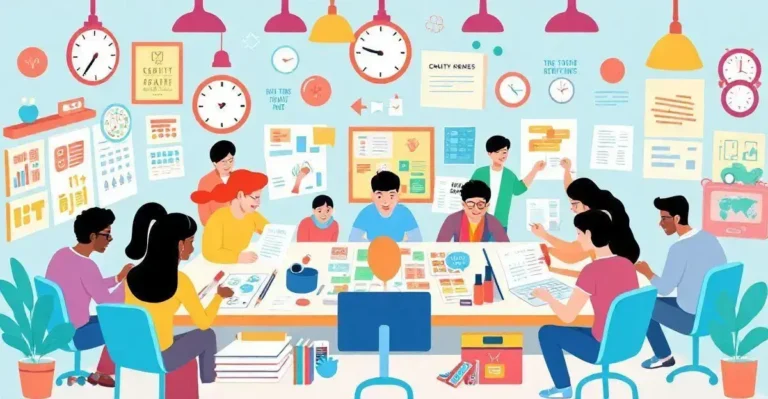Games for productivity are more than just fun—they’re effective tools to help boost focus and efficiency. By adding a game element to your tasks, you can stay motivated and achieve more while enjoying the process.
In today’s fast-paced world, staying productive is key. Productivity games make work feel less like a grind, turning tasks into fun challenges that improve time management and boost motivation.
Want to know how to make the most of these games? Keep reading to explore the best options and how they can fit seamlessly into your routine.
Understanding Productivity Games
Understanding the games for productivity can transform the way individuals and teams approach their work. These games are designed to motivate users, improve focus, and create a rewarding environment where achieving tasks becomes more engaging.
By incorporating game mechanics such as points, levels, and challenges, these games encourage productivity in a fun and interactive manner.
One of the key benefits of productivity games is their ability to foster healthy competition among team members. When individuals compete to reach specific goals, it promotes collaboration and a sense of camaraderie.
Moreover, various tools and applications available today allow users to track their progress, providing real-time feedback that enhances motivation.
Setting clear objectives is crucial for ensuring that productivity games serve their purpose. Whether it’s through personal achievement tracking or team challenges, defining what success looks like can guide players toward focusing on the right tasks.
Additionally, rewards play a significant role in these games. By earning incentives for completed tasks, users are more likely to stay engaged and motivated.
Incorporating productivity games in the workplace can drive not only individual performance but also overall team dynamics. Organizations that adopt these innovative methods may see boosts in both morale and output.
Gamifying productivity is not just about fun; it’s about creating a culture where efficiency and achievement are celebrated.
Benefits of Games for Productivity

The benefits of games for productivity are becoming increasingly clear in today’s fast-paced work environment. These games introduce elements of fun and engagement, making mundane tasks more enjoyable. By integrating game mechanics into daily routines, individuals can experience enhanced motivation and improved focus.
One significant advantage is the improvement in time management. Games for productivity can encourage users to break tasks into smaller, manageable challenges. This approach can help reduce the feeling of being overwhelmed and promote a sense of accomplishment as users check off completed tasks.
Furthermore, these games often incorporate social features, allowing colleagues to collaborate and compete. This not only fosters a sense of teamwork but also builds a community where sharing successes is encouraged. Celebrating milestones together can boost morale and create a positive work atmosphere.
Additionally, the feedback provided through productivity games is invaluable. Players can receive instant insights into their performance, helping them adjust their strategies and methods for better results. This data-driven approach aids in identifying patterns, revealing areas for improvement, and maximizing efficiency.
In summary, leveraging the benefits of productivity games can lead to a more engaged workforce, consistent performance tracking, and ultimately, enhanced productivity. With the right implementation, organizations can create a motivated culture that thrives on innovation and success.
Top Games that Boost Productivity
Top games for productivity can provide unique ways to enhance focus and efficiency in the workplace or at home. These games often incorporate game mechanics that make routine tasks more engaging and enjoyable. By transforming work into a challenge, users are motivated to achieve their goals while having fun.
One popular option is Pomodoro Timer Games. These games for productivity break work into intervals, typically 25 minutes long, followed by short breaks.
This method not only helps maintain concentration but also reduces fatigue. Users can compete against a timer, aiming to complete as much work as possible before the break.
Another effective choice is Todoist Karma, where users earn points for completing tasks. This gamified feature encourages individuals to stay organized and accomplish their to-do lists, making everyday chores feel rewarding.
Habitica blends productivity with role-playing. Users can turn their tasks into quests and earn rewards, keeping them engaged and motivated to improve their daily habits. By leveling up characters through task completion, users experience a sense of achievement and progress.
Finally, Forest is a unique app that promotes focus by allowing users to grow virtual trees as they stay dedicated to their tasks. If the user exits the app, their tree dies, creating a compelling reason to remain focused.
Integrating these games into daily routines can lead to significant improvements in productivity while making the process enjoyable. Embracing fun, engaging methods to accomplish tasks can make a big difference in performance and motivation.
How to Incorporate Games into Daily Tasks

Incorporating games for productivity into daily tasks can significantly enhance productivity and make work more enjoyable. One effective method is to use time management games, like the Pomodoro technique, which allows users to work in focused bursts followed by short breaks.
This structure not only helps maintain concentration but also creates a sense of urgency that can boost efficiency.
Another great approach is to gamify task lists. By using apps like Todoist, users can earn points for completing tasks, turning chores into a fun challenge. The competitive element motivates individuals to stay on track and accomplish more throughout the day.
To further engage users, creating a reward system can be beneficial. For instance, setting personal rewards for achieving certain milestones can provide additional motivation. Whether it’s a coffee break, a short walk, or a small treat, having something to look forward to helps keep spirits high.
Lastly, introducing team challenges can foster collaboration and friendly competition among coworkers. Using platforms that allow teams to track their progress and celebrate achievements creates a sense of community and encourages everyone to perform at their best.
Real-life Success Stories with Productivity Games
Real-life success stories with games for productivity illustrate their effectiveness in various settings. One notable example is UnitedHealth Group, which implemented a gamified system called Healthy Mind to boost employee engagement.
This initiative encouraged employees to focus on wellness by completing challenges, earning rewards, and tracking progress. The result was a noticeable increase in employee participation and overall health metrics.
Another success story comes from Google. They used a platform called Google Play Games to promote task completion among teams.
By allowing teams to earn points and unlock achievements for meeting deadlines, Google saw a dramatic increase in project completion rates. Employees enjoyed the competitive aspect, which motivated them to work harder and achieve their goals.
Additionally, Salesforce embraced gamification to improve productivity in their sales teams. They introduced the Salesforce Trailhead, a platform where users earn badges for completing training and tasks.
This not only enhanced knowledge and skills among staff but also fostered a culture of continuous learning and achievement.
These examples highlight how integrating productivity games into workplace culture can lead to substantial improvements in engagement, performance, and overall job satisfaction.
Tips for Choosing the Right Game

Choosing the right game for productivity can make a big difference in achieving your goals. First, consider the type of tasks you want to improve.
For example, if you need to focus on time management, look for games that use techniques like the Pomodoro method. These games help break work into intervals, making it easier to concentrate.
Next, think about the level of engagement you want in a game. Some people prefer competitive environments where they can challenge others, while others might enjoy a more personal achievement-focused approach. Choose a game that aligns with your style to keep you motivated.
It’s also important to evaluate the platform on which the game operates. Many productivity games are available as apps, while others can be found on desktop platforms. Pick a platform that you find convenient and accessible, as this will help ensure you use it regularly.
Finally, read user reviews to understand how effective a game has been for others. Feedback from real users can provide insights into what works well and what to avoid. By considering these factors, you can select the most suitable productivity game for your needs.
Games for Productivity: Final Considerations
Incorporating productivity games into daily routines can significantly enhance focus and efficiency. Through engaging mechanics, these games make completing tasks enjoyable and promote motivation among users.
From well-known companies like Google and Salesforce implementing gamification strategies to individuals using apps for personal productivity, the positive outcomes are clear. As shown by real-life success stories, productivity games can transform how we approach our work.
Choosing the right game is essential to maximize these benefits. Consider the type of tasks, the level of engagement, the platform, and user reviews before selecting a game that suits your needs.
Ultimately, the right productivity game can lead to increased output, improved teamwork, and a more positive work environment.

